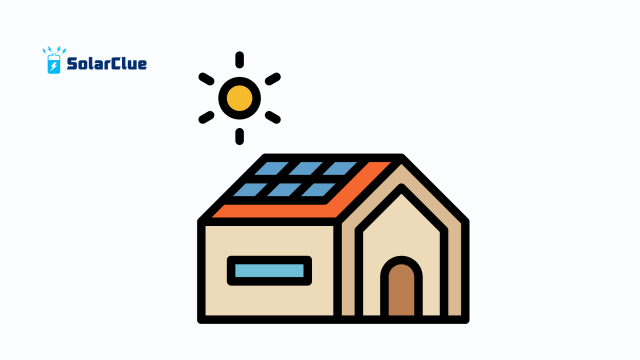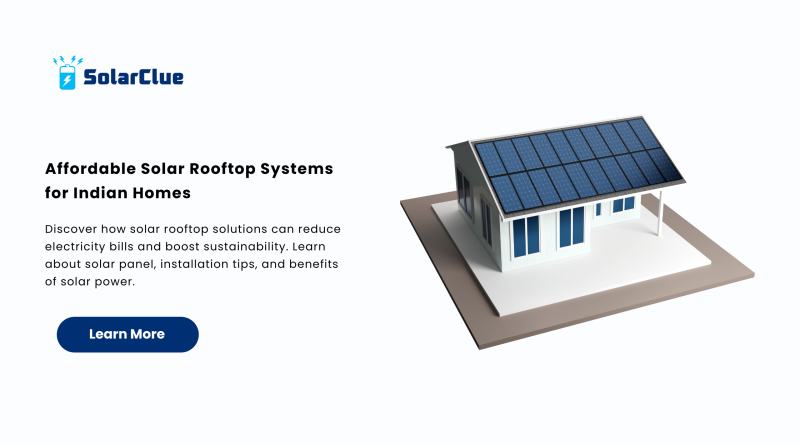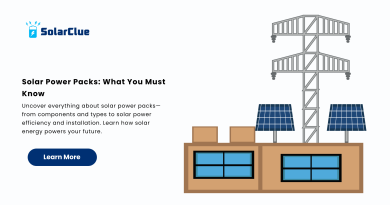Affordable Solar Rooftop Systems for Indian Homes
A solar rooftop system is a setup where solar panels are installed on the roof of residential or commercial buildings. These panels convert sunlight into electricity, enabling households to use solar power and reduce their dependency on the grid.
Table of Contents
- 1 Why Choose Solar Rooftop Systems?
- 2 Key Components of a Solar Power System
- 3 Benefits of Installing a Solar Rooftop at Home
- 4 How to Choose the Right Solar Panel for Your Roof
- 5 Steps Involved in Solar Rooftop Installation
- 6 Government Support and Incentives
- 7 Maintenance Tips for Long-Term Performance
- 8 How Much Can You Save With Solar?
- 9 Common Myths About Solar Power
- 10 Urban and Rural Adoption of Solar in India
- 11 Environmental Impact of Solar Energy
- 12 Best Time to Install Solar Rooftop Systems
- 13 Popular Brands for Solar Panels in India
- 14 Final Thoughts: Is Solar Rooftop Right for You?
- 15 FAQs
Why Choose Solar Rooftop Systems?
India, with its abundant sunshine, is a perfect place for solar rooftop installation. Some key reasons to choose it include:
- Reduced electricity bills
- Minimal maintenance
- Clean and renewable energy
- Government subsidies and net metering policies
Key Components of a Solar Power System
Every solar power system has essential parts that ensure efficiency:
- Solar panels: Capture sunlight and convert it into DC electricity
- Inverter: Converts DC into usable AC electricity
- Battery (optional): Stores excess energy for later use
- Mounting structure: Holds panels in place on the rooftop
Benefits of Installing a Solar Rooftop at Home
Installing a solar rooftop is one of the smartest ways to cut down on long-term energy costs while contributing to environmental conservation. Here are some notable benefits:
- Energy Independence: Reduce reliance on electricity companies
- Cost Savings: Slash monthly power bills significantly
- Eco-Friendly: Zero emissions and carbon-free energy
- Increased Property Value: Solar-equipped homes attract more buyers
How to Choose the Right Solar Panel for Your Roof
Selecting the right solar panel depends on factors like:
- Roof size and angle
- Daily energy consumption
- Quality of panel and warranty
- Budget and ROI expectations
Monocrystalline and polycrystalline panels are popular choices in India. Monocrystalline panels are slightly more efficient and space-saving.
Steps Involved in Solar Rooftop Installation
- Site assessment and feasibility check
- System design as per energy needs
- Panel and equipment selection
- Installation by certified professionals
- Inspection and approval
- Connection to the electricity grid
Government Support and Incentives
The Indian government offers multiple schemes to promote solar rooftop installation:
- Capital subsidies for residential consumers
- Net metering to sell excess energy to DISCOMs
- Income tax benefits under certain categories
Make sure to check your state’s specific policies before beginning the process.
Maintenance Tips for Long-Term Performance
- Regularly clean the solar panels to remove dust and debris
- Check wiring and inverter status every few months
- Schedule annual inspections by professionals
How Much Can You Save With Solar?
On average, Indian households can save 50–90% on electricity bills depending on the system size and usage. Over 25 years, this can amount to lakhs in savings.
Common Myths About Solar Power
Solar power adoption is hindered by myths:
- “Solar panels don’t work in cloudy weather” – they still generate power
- “Too expensive to install” – prices have dropped significantly
- “Requires too much space” – rooftops are ideal locations
Urban and Rural Adoption of Solar in India

Cities like Delhi, Bangalore, and Pune are seeing rapid solar rooftop growth. In rural areas, solar systems are transforming lives by powering homes and agricultural equipment in remote regions.
Environmental Impact of Solar Energy
Switching to solar power helps reduce the carbon footprint and fight climate change. Each kilowatt-hour (kWh) of solar electricity avoids over 0.5 kg of CO2 emissions.
Best Time to Install Solar Rooftop Systems
The ideal time for installation is before peak summer when electricity usage spikes. Installing during cooler months also allows for better panel performance.
Popular Brands for Solar Panels in India
- Tata Power Solar
- Vikram Solar
- Loom Solar
- Waaree Energies
Choose brands that offer at least 25 years of warranty and reliable customer service.
Final Thoughts: Is Solar Rooftop Right for You?
If you’re looking for sustainable energy, lower electricity bills, and an environmentally responsible lifestyle, a solar rooftop system is a smart investment. It offers high returns, low maintenance, and contributes to a greener India.
FAQs
1. How long do solar rooftop systems last?
Most systems last over 25 years with minimal maintenance.
2. What size system do I need for a 3BHK home?
Typically, a 3-5 kW system is sufficient, depending on energy use.
3. Can I install a solar rooftop system on a flat roof?
Yes, with proper mounting structures, installation on flat roofs is feasible.
4. Do solar panels work during monsoons?
Yes, though efficiency may drop, panels still generate power.
5. Is solar rooftop worth it in apartments?
Yes, many apartment complexes opt for shared solar systems.
Take the next step toward energy independence—visit our website at solarclue.com and explore more tips on blog.solarclue.com to start your solar journey today!



